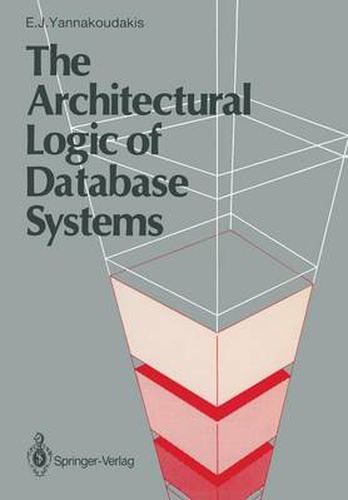Readings Newsletter
Become a Readings Member to make your shopping experience even easier.
Sign in or sign up for free!
You’re not far away from qualifying for FREE standard shipping within Australia
You’ve qualified for FREE standard shipping within Australia
The cart is loading…






This title is printed to order. This book may have been self-published. If so, we cannot guarantee the quality of the content. In the main most books will have gone through the editing process however some may not. We therefore suggest that you be aware of this before ordering this book. If in doubt check either the author or publisher’s details as we are unable to accept any returns unless they are faulty. Please contact us if you have any questions.
If we look back to pre-database systems and the data units which were in use, we will establish a hierarchy starting with the concept of ‘field’ used to build ‘records’ which were in turn used to build higher data units such as ‘files’. The file was considered to be the ultimate data unit of information processing and data binding ‘monolith’. Moreover, pre database systems were designed with one or more programming languages in mind and this in effect restricted independent develop ment and modelling of the applications and associated storage structures. Database systems came along not to turn the above three units into outmoded concepts, but rather to extend them further by establishing a higher logical unit for data description and thereby offer high level data manipulation functions. It also becomes possible for computer professionals and other users to view all information processing needs of an organisation through an integrated, disciplined and methodical approach. So, database systems employ the concepts field, record and file without necessarily making them transparent to the user who is in effect offered a high level language to define data units and relation ships, and another language to manipulate these. A major objective of database systems is to allow logical manipulations to be carried out independent of storage manipulations and vice versa.
$9.00 standard shipping within Australia
FREE standard shipping within Australia for orders over $100.00
Express & International shipping calculated at checkout
This title is printed to order. This book may have been self-published. If so, we cannot guarantee the quality of the content. In the main most books will have gone through the editing process however some may not. We therefore suggest that you be aware of this before ordering this book. If in doubt check either the author or publisher’s details as we are unable to accept any returns unless they are faulty. Please contact us if you have any questions.
If we look back to pre-database systems and the data units which were in use, we will establish a hierarchy starting with the concept of ‘field’ used to build ‘records’ which were in turn used to build higher data units such as ‘files’. The file was considered to be the ultimate data unit of information processing and data binding ‘monolith’. Moreover, pre database systems were designed with one or more programming languages in mind and this in effect restricted independent develop ment and modelling of the applications and associated storage structures. Database systems came along not to turn the above three units into outmoded concepts, but rather to extend them further by establishing a higher logical unit for data description and thereby offer high level data manipulation functions. It also becomes possible for computer professionals and other users to view all information processing needs of an organisation through an integrated, disciplined and methodical approach. So, database systems employ the concepts field, record and file without necessarily making them transparent to the user who is in effect offered a high level language to define data units and relation ships, and another language to manipulate these. A major objective of database systems is to allow logical manipulations to be carried out independent of storage manipulations and vice versa.